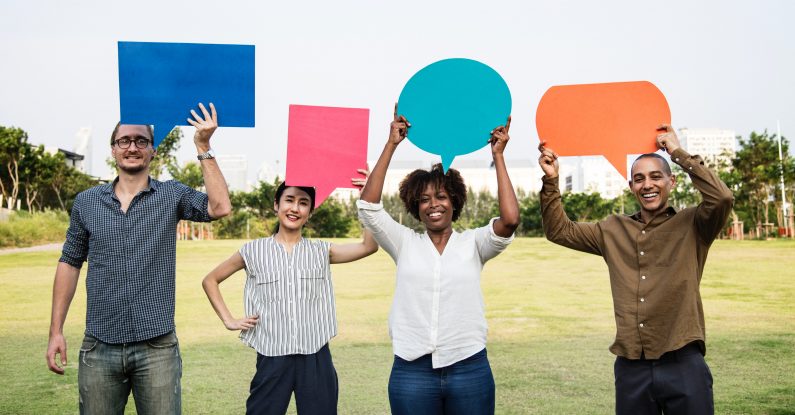
It was his body language that annoyed me.
“Still listening”
was his response – still looking at his pad.
“I’ll just wait till you’re finished,”
I replied.
It may be part of their training in that particular car dealership.
25 minutes later, when his colleague came to see me, it was a similar experience.
“How can I help you?”
came the familiar question.
His hands were thrust deep in his pockets.
He loomed over me with an annoyed look on his face – as if I were ruining his day.
I stood up to introduce myself then sat back down again.
He continued to stand, so I invited him to sit and hear my tale of woe.
It’s rule number one of public speaking: look at your audience.
Now you could argue that both guys did indeed say the right thing.
The trouble is, body language trumps words every time.
55% of the message comes across in body language, and ONLY 7% in words.
A great example is when Theresa May ‘danced’ onto the stage at the Conservative Party conference.
She was attempting to look relaxed in extremely tense time especially as the previous year’s conference was a PR disaster.
If body language is disingenuous, then people do notice.
I often “pull” a smile going through the scanner at Glasgow Airport security.
I want to look innocent, but it makes me look guilty.
We are built to read body language – and we read a lot into it.
More than 20 years ago, I noted when Scotland rugby captain Gavin Hastings went around everybody at our charity ball table before sitting down to eat.
He shook each person by the hand, had a chat and then moved on.
I was impressed – and vowed from that day to make that my habit.
When I got to the last person at a recent golf outing dinner in St Andrews, I repeated the routine.
I smiled, put out my hand to shake and said:
“Hi, I’m Bill McFarlan.”
“I know Bill,”
came the reply.
“We golfed together for four hours today.”
My team member had been wearing a golf beanie hat on the course and was now also wearing glasses – I simply hadn’t recognised him.
I fumbled out a response about always wondering how Superman could turn into Clark Kent simply by putting on specs.
Then I sat down, embarrassed.
Body language matters most when we are making speeches or appearing on television.
A much bigger audience needs to respond to us positively.
At Pink Elephant Communications, we have three simple rules:
Keeping a focus on strong eye contact from the podium or with the interviewer in the studio is vital.
It demonstrates a strong connection with the audience.
If you keep them by your side, you’re two-dimensional rather than three.
So allow your hands to help you express yourself and freely moving to make your point.
A smile says
“I’m friendly”
and
“I like you”.
Something I learned many years ago from How to Win Friends and Influence People, by Dale Carnegie.
Your topic may be serious, even gravely serious, but there are always moments you can smile – like when you introduce yourself.
I note how so many waiters and waitresses use body language positively when dining out.
It starts with a smile.
Then positive words, along with an enthusiastic description of the “specials”.
Already I’m relaxed – like them – and I’m considering their recommendation, which is often the most expensive thing on the menu.
They’re often on the minimum wage although they are on maximum effort.
Whether on the road running courses across Europe or in our studios, we welcome participants in the same way when they arrive.
We stand up, shake hands, look them in the eye and smile, and tell them we are pleased to meet them.
When they arrive late, we stand up – smile, shake hands and introduce ourselves.
This makes them feel more comfortable.
It’s very simple and most people do the same.
When it’s missing, with zero eye contact, or hands thrust deep in pockets, or when you remaining standing when your guest sits, or when the look says;
“you’re ruining my day”
the body language sucks.
Regardless of the day we’re having, we need to project positivity.
Body language is the signpost that we want to be friendly and helpful.
We only get one chance to make a first impression – so take it every time.
Bill McFarlan is Co-Founder and Executive Chairman at Pink Elephant Communications in Glasgow.
You can view his full profile here.
11th October 2018 Featured in Blog by Pink Elephant
Body language pics from Pexels
Photo by Unsplash
12th October 2018 Featured in: Blog, Communication skills training blogs, Presentation skills training blogs, Public speaking training blogs By: Pink Elephant
Some media trainers knock you down…and leave you down. Our media coaches show you how to deal with each knock…and still win through. So you have the presentation skills to perform – with confidence.